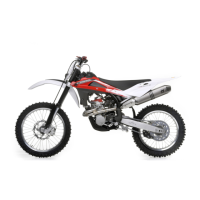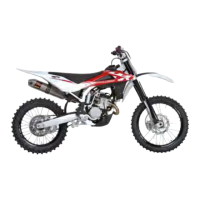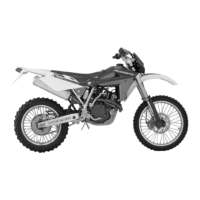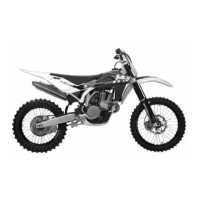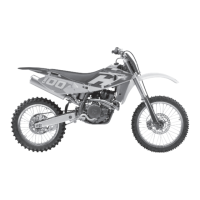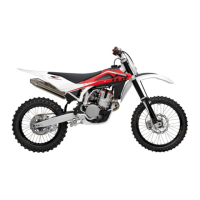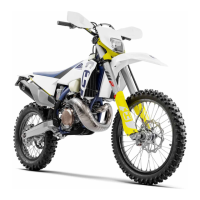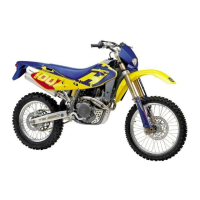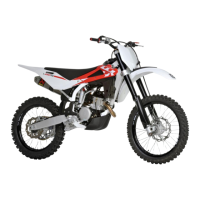Bleeding
Perform this procedure with the fork legs removed and fully extended or
with the fork installed and the front wheel lifted off the ground.
Air entering into the fork legs in service will affect pressure and may cause the
fork to malfunction. This is due to the special conguration of the sealing rings
that hold air inside the fork legs.
Both fork legs should be bled monthly or after each race.
You can tell that a fork needs bleeding when SAG decreases or when the
suspension feels hard (as the additional pressure introduced by air increases
preload).
You will need a small pin punch to perform this procedure.
Air bleed valves are located on the top caps of each fork leg.
If the fork is not operating properly or movement is becoming less smooth, per-
form the following procedure:
Remove the protection plug (8).
Push down the air valve (9) using a small pin punch and release all pressure
from the fork leg.
Ret the protection plug (8).

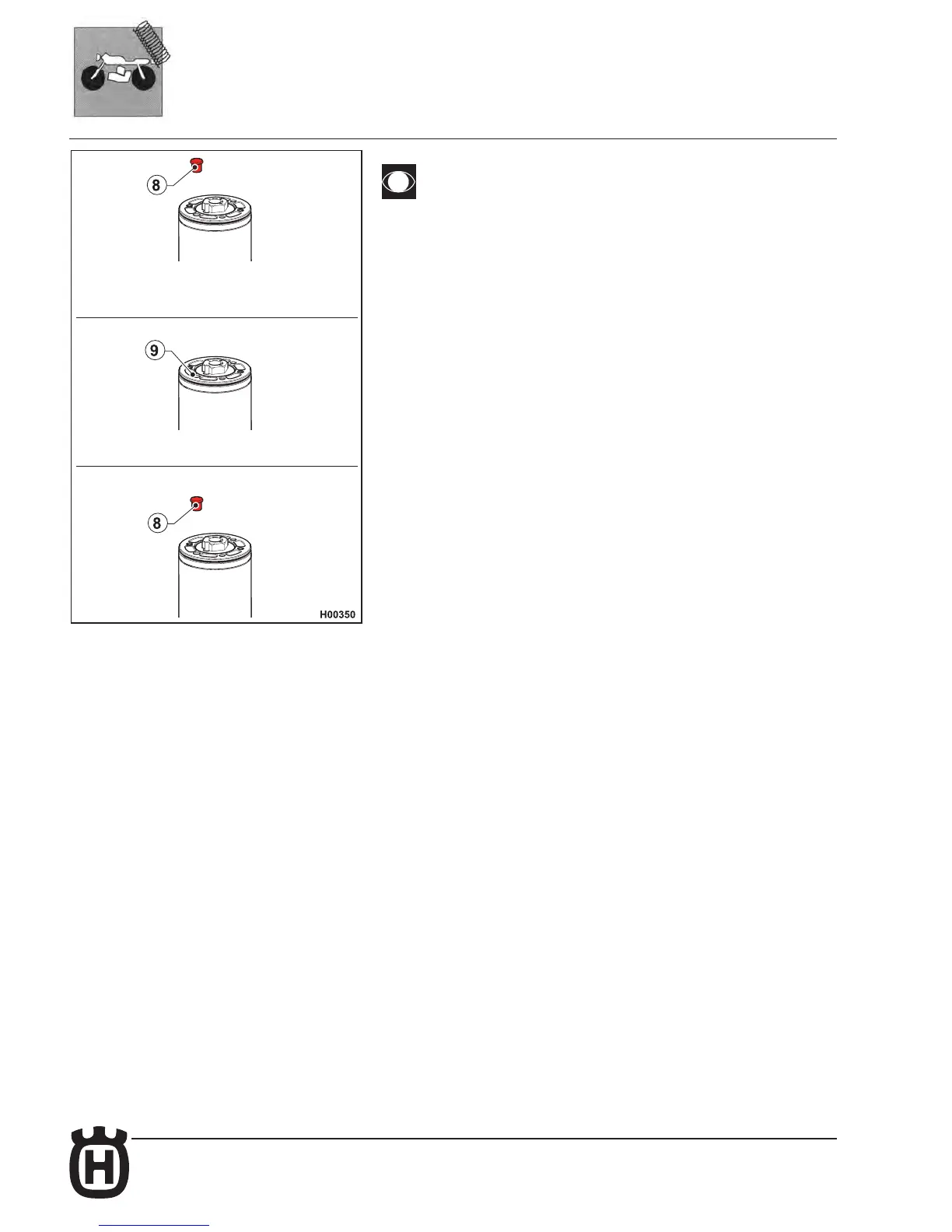